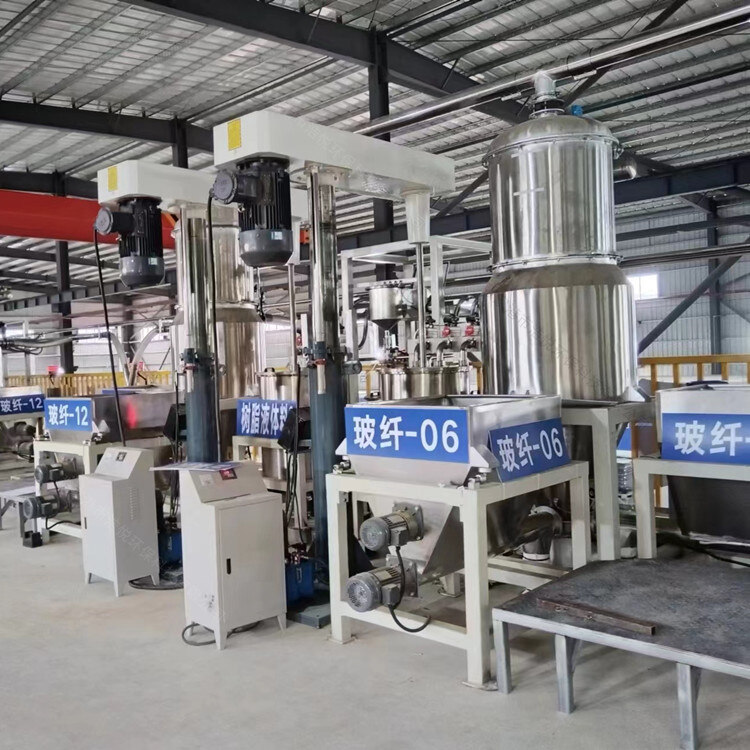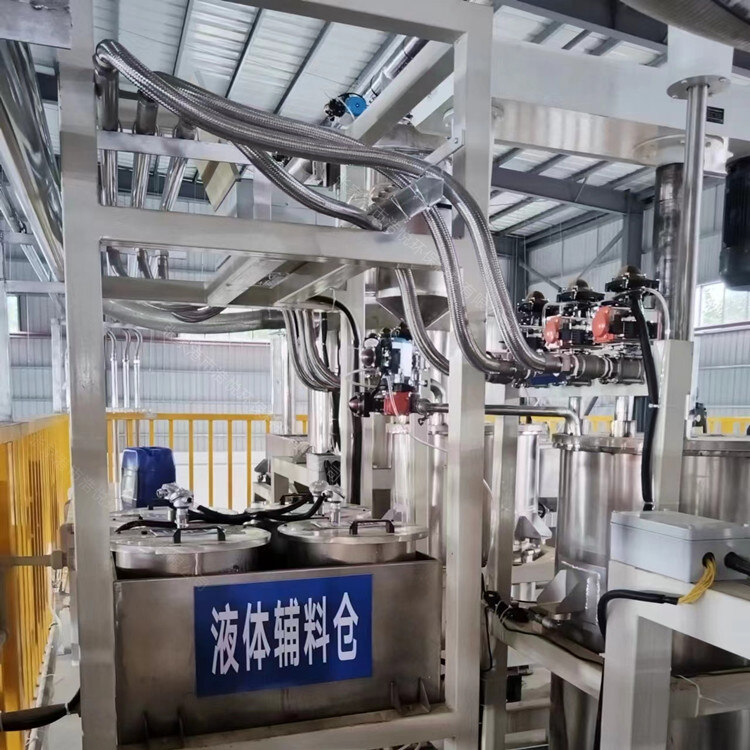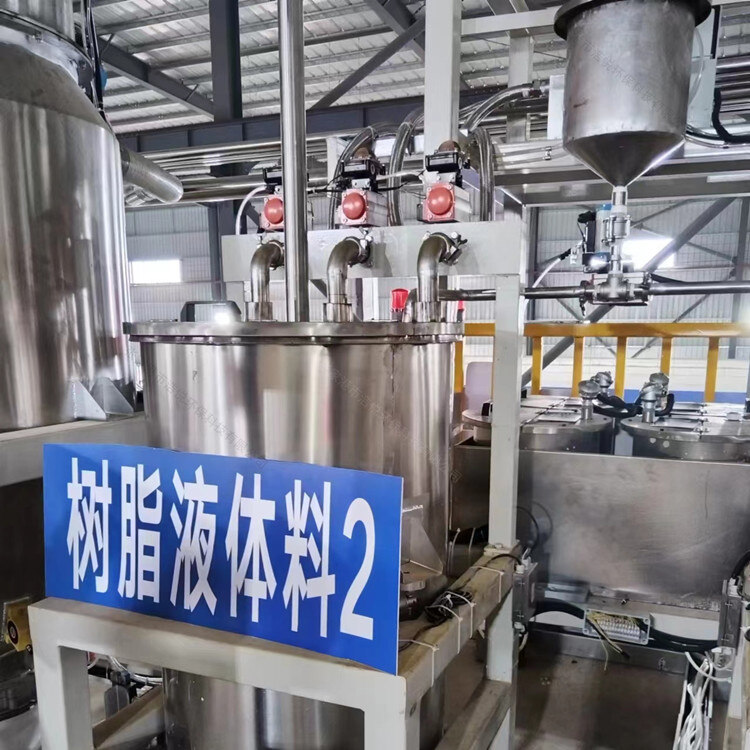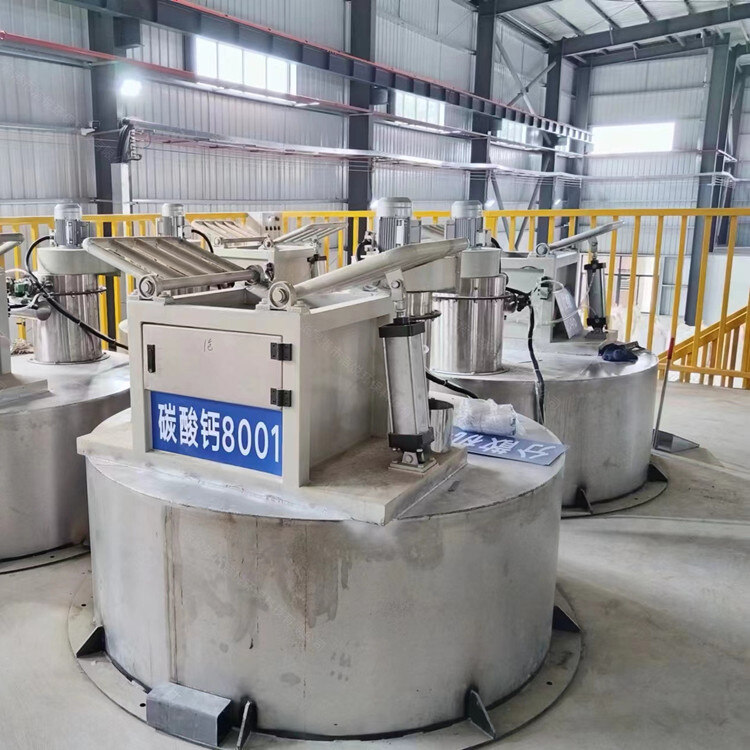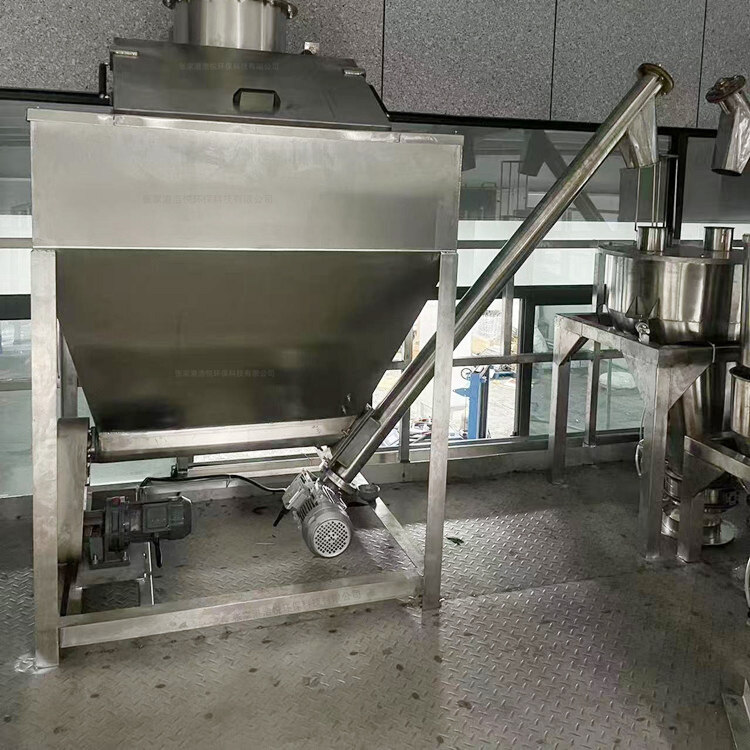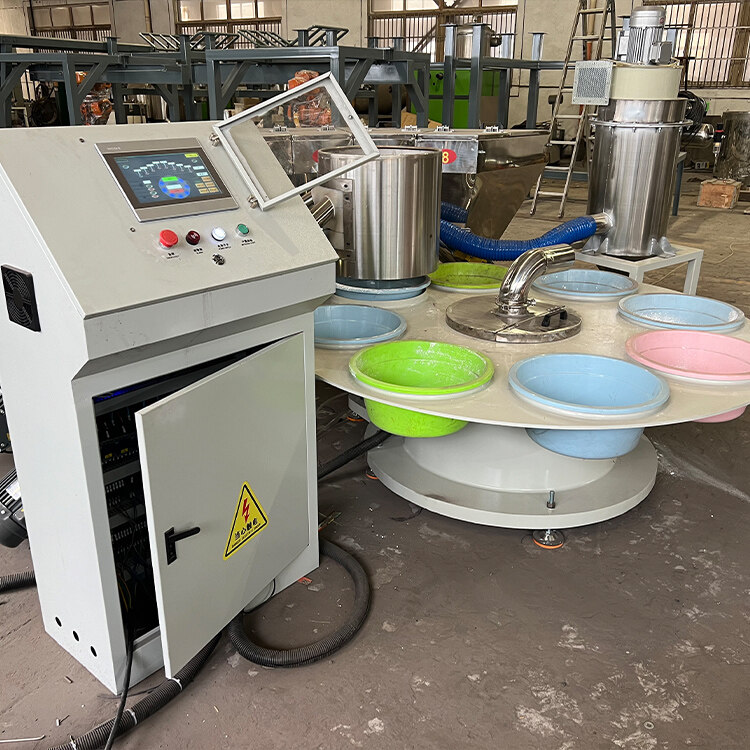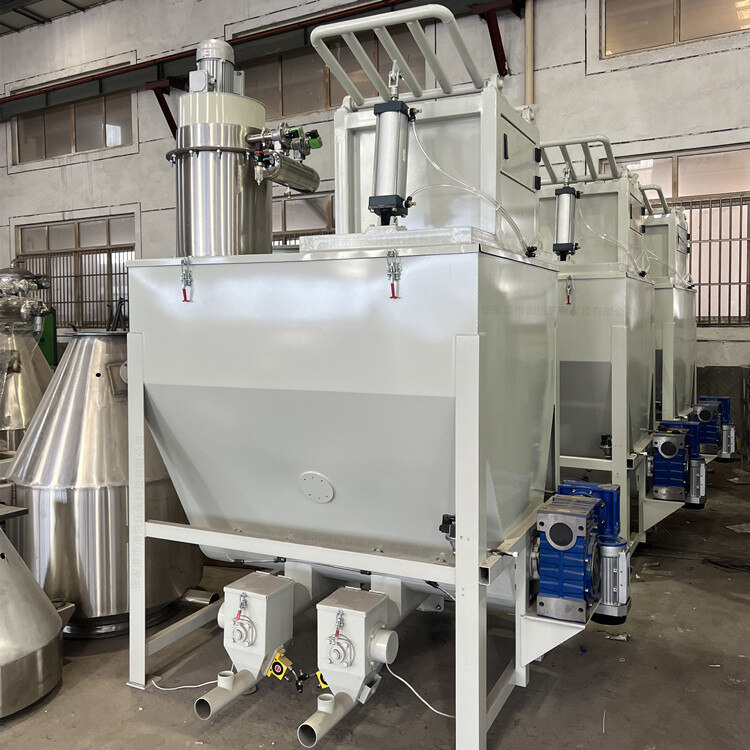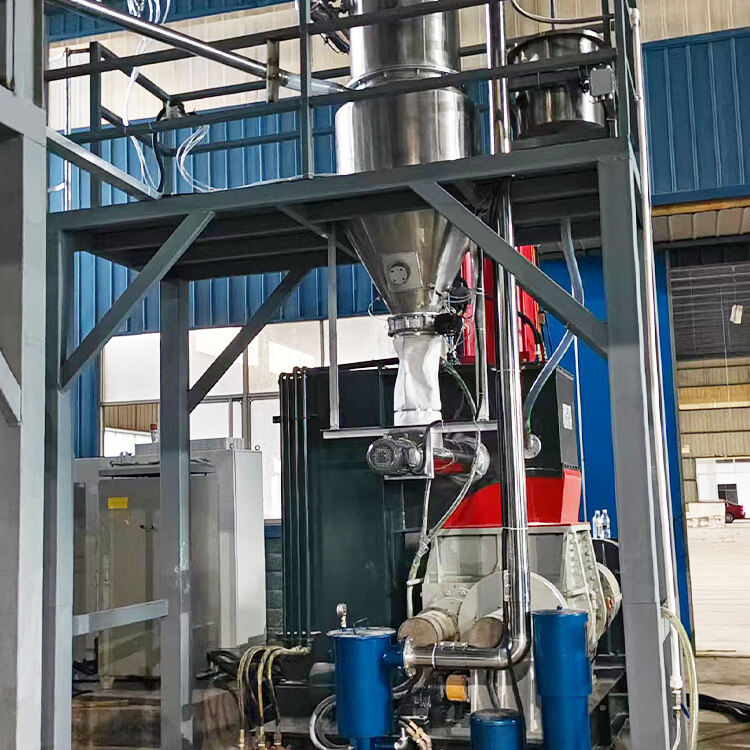- Introduction to automatic batching machine and fully automatic batching machine equipment
- The powder metering system tells you about the introduction of the mixing and drying machine
- 1000kg vacuum feeding machine
- Fully automatic small material batching system
- Research on Innovation of Automatic Weighing Machine Technology
- Design and operation of automatic batching system using PLC, industrial computer and frequency converter
Liquid automatic metering and batching machine
- Category:Automatic metering and conveying equipment
- Hits:205次
- Release Date:2025-06-27
- Share:
- Inquiry
- Details
In the production processes of industries such as chemical, food and beverage, pharmaceutical, and coating, precise measurement and scientific proportioning of liquid materials are key links in ensuring product quality and improving production efficiency. The liquid automatic metering and batching machine integrates advanced sensor technology, automation control technology, and intelligent algorithms to achieve high-precision metering, automated proportioning, and intelligent management of various liquid materials. It effectively solves the problems of large errors, low efficiency, and high labor intensity in traditional manual batching, and has become an indispensable core equipment for modern industrial production.
1、 Working principle
The liquid automatic metering and batching machine is mainly based on two principles: flow measurement and weight measurement. It converts physical quantities into electrical signals through sensors, and then processes them through the control system to achieve accurate metering and batching.
In the flow measurement method, the commonly used electromagnetic flowmeter is based on Faraday's law of electromagnetic induction. When a conductive liquid cuts magnetic field lines in a magnetic field, an induced electromotive force is generated at both ends of the liquid. The liquid flow rate is calculated by detecting the magnitude of this electromotive force; The turbine flowmeter uses fluid flow to drive the turbine to rotate, and the speed of the turbine is proportional to the flow rate. The turbine speed is detected by sensors and converted into flow rate. The weight measurement method mainly relies on weighing sensors. When the liquid flows into the measuring container, the weighing sensor converts the weight change into an electrical signal. After signal amplification and A/D conversion, it is transmitted to the control system for comparison with the preset weight value, thereby controlling the opening and closing of the feed valve and achieving quantitative measurement.
The control system monitors and precisely regulates the measurement process of each material in real-time based on preset formula parameters. When a material reaches the set measurement value, the control system will automatically close the corresponding feed valve and start the measurement of the next material until all material batching tasks are completed.
2、 System composition
(1) Material storage unit
This unit mainly consists of various types of liquid storage tanks, used to store different types of liquid materials. Liquid storage tanks are made of different materials according to their material characteristics. For example, stainless steel is suitable for most non corrosive liquids, while tanks lined with anti-corrosion materials are used for highly corrosive liquids. Liquid storage tanks are usually equipped with liquid level sensors to monitor the liquid level height inside the tank in real time. When the liquid level is lower than the set value, the system automatically alarms and reminds operators to replenish materials. Some liquid storage tanks are also equipped with stirring devices to prevent liquid material from settling or layering, ensuring material uniformity.
(2) Measurement unit
Flow metering devices: including electromagnetic flow meters, turbine flow meters, mass flow meters, etc. Electromagnetic flowmeter has high accuracy and good stability, suitable for measuring conductive liquids, with an accuracy of up to ± 0.5%; Turbine flow meters have a simple structure and low cost, and are commonly used for liquid measurement in industries such as petroleum and chemical; Mass flow meters can directly measure the mass flow rate of liquids without being affected by factors such as temperature, pressure, density, etc., with an accuracy of up to ± 0.1%. However, they are relatively expensive and are often used in situations where high measurement accuracy is required.
Weight based measuring device: composed of weighing sensors, measuring containers, and brackets. The accuracy of the weighing sensor can reach 0.05% FS, and it can achieve static or dynamic weighing. Static weighing is suitable for batch batching, where liquids are measured in a static state; Dynamic weighing is used for real-time measurement in continuous production processes, by continuously monitoring changes in the weight of the liquid in the measuring container and controlling the feeding speed.
(3) Conveyor and control unit
Conveying equipment: mainly includes pipelines, valves, and conveying pumps. Select different materials and pipe diameters for pipelines based on material characteristics to ensure smooth liquid transportation; The valve adopts electric valve or pneumatic valve, and its opening and closing are controlled by the control system to accurately adjust the liquid flow rate; The conveying pump selects centrifugal pumps, gear pumps, or screw pumps based on the viscosity and flow requirements of the material to provide power for liquid transportation.
Control system: with programmable logic controller (PLC) or distributed control system (DCS) as the core, combined with human-machine interface (HMI). PLC is responsible for collecting sensor data, executing control algorithms, and driving actuator actions; DCS is suitable for large and complex batching systems, which can achieve centralized monitoring and management of multiple batching points. HMI provides operators with an intuitive interface for setting formulas, adjusting parameters, monitoring operational status, and handling fault alarms. The system also supports integration with the factory production management system (MES) to achieve data sharing and remote monitoring.
(4) Mixed unit
For production processes that require mixing of multiple liquids, specialized mixing equipment such as mixing tanks and static mixers should be equipped. The mixing tank uses the rotation of the stirring blade to thoroughly mix the liquid material; A static mixer utilizes a special internal structure to achieve mixing of liquids during the flow process, which has the advantages of good mixing effect and low energy consumption.
3、 Typical application scenarios
(1) Food and beverage industry
In beverage production, the liquid automatic metering and batching machine precisely controls the ratio of water, syrup, juice, additives and other materials to ensure consistent taste and quality of each batch of beverages. For example, on a carbonated beverage production line, the system accurately measures raw materials such as water, carbon dioxide, syrup, etc. By precisely controlling the proportions of each material, the taste and bubble content of the beverage are ensured to meet standards. In dairy production, it is used for measuring and mixing materials such as milk, cream, and additives to ensure that the nutritional content of the product meets the standard.
(2) Chemical industry
In chemical production, liquid automatic metering and batching machines are widely used in the production of coatings, inks, adhesives and other products. In the production process of coatings, precise measurement of materials such as resins, solvents, pigments, and additives is carried out to ensure the stability of performance indicators such as color, viscosity, and drying speed of the coatings. For some hazardous chemical ingredients, the system has explosion-proof design and safety protection measures to ensure production safety.
(3) Pharmaceutical industry
The pharmaceutical process requires extremely high measurement accuracy and hygiene for liquid materials. The liquid automatic metering and batching machine is used for the preparation of medicinal liquids, accurately controlling the dosage of various raw materials, solvents, and excipients to ensure accurate drug composition and stable quality. The equipment adopts materials and designs that comply with GMP standards, and the fully enclosed measuring and conveying process prevents material contamination, ensuring the safety of drug production.
(4) Daily chemical industry
In the production of daily chemical products such as shampoo, bath gel, detergent, etc., the automatic liquid metering batching machine accurately measures materials such as surfactant, essence, pigment, preservative, etc., to ensure the consistency of cleaning effect, fragrance and appearance of products, while improving production efficiency and reducing production costs.
4、 Technological advantages and development trends
(1) Technical advantages
High precision measurement: Advanced sensors and measurement algorithms keep ingredient errors within a very small range, ensuring product quality stability and reducing product failure rates caused by measurement deviations.
High degree of automation: The entire process is automated, reducing manual intervention, lowering labor intensity, improving production efficiency, and achieving 24-hour continuous production.
Strong flexibility: supports multiple formula storage, can quickly switch formulas according to production needs, adapt to the production requirements of different products, and meet diverse market demands.
Data traceability: The system automatically records information such as the time, type, quantity, and operator of each ingredient, facilitating production management and quality traceability, and providing data support for optimizing production processes for enterprises.
(2) Development Trends
Intelligent upgrade: Introducing artificial intelligence and Internet of Things technology to achieve device self diagnosis, automatic calibration, and adaptive control, optimizing ingredient algorithms through machine learning, and improving system performance and stability.
Integration and modularization: Develop integrated equipment that integrates metering, batching, conveying, and mixing to reduce footprint; Adopting modular design for easy installation, maintenance, and upgrading of equipment.
Energy conservation and environmental protection: optimize equipment structure and control strategies to reduce energy consumption; Adopting energy-saving conveying pumps and valves to reduce energy consumption; At the same time, strengthen the recycling and utilization of materials, reduce production costs, and achieve green production.
Safety and reliability improvement: Strengthen the safety protection design of equipment, improve explosion-proof and leak proof performance for hazardous chemical ingredients; Improve fault warning and emergency response mechanisms to ensure the safety and reliability of the production process.
The liquid automatic metering and batching machine plays an important role in modern industrial production with its advanced technology and wide applicability. With the continuous advancement of technology, it will develop towards a more intelligent, efficient, and environmentally friendly direction, providing strong support for the high-quality development of various industries.


